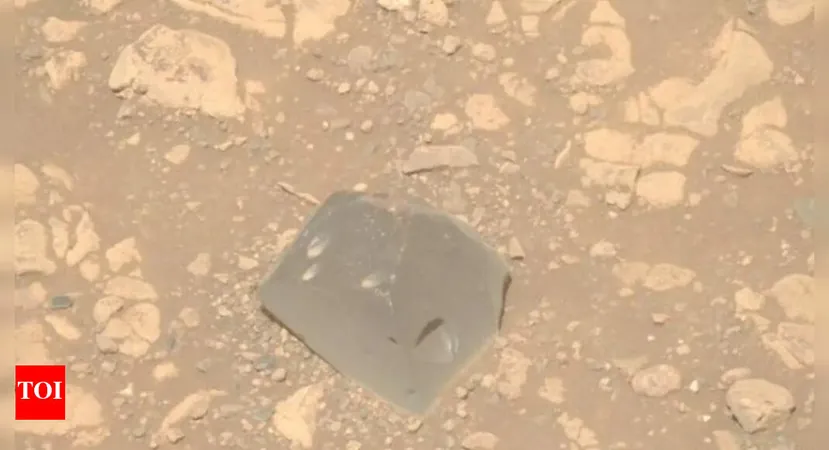
Strange Discovery on Mars: Is It an Alien Skull?
2025-04-20
Author: Chun
NASA's Perseverance Rover Uncovers a Skull-Like Rock
In a jaw-dropping discovery, NASA's Perseverance rover has stumbled upon a rock strikingly resembling a skull, affectionately named "Skull Hill." Found in the Jezero Crater, this peculiar formation stands in stark contrast to the lighter Martian landscape.
On April 11, while venturing across the rugged terrain of Witch Hazel Hill, the rover's keen observations revealed Skull Hill—a dark, jagged rock dotted with small pits—on a slope within this ancient crater, once thought to have hosted a vast lake.
A Closer Look: Does It Belong?
Margaret Deahn, a Ph.D. student from Purdue University involved in the mission, remarked, "It looks like it doesn’t belong there," hinting at Skull Hill's mysterious origins. The rock’s unusual characteristics suggest it may be a "float"—a term for rocks that have been displaced from their original locations due to natural forces like erosion or meteorite impacts.
What Makes Skull Hill So Captivating?
Initially, researchers speculated the rock could be a meteorite. However, a thorough chemical analysis conducted with the rover's state-of-the-art SuperCam, equipped with laser technology, dispelled that theory. It revealed a lack of the high iron and nickel content typically found in meteoric materials.
Instead, experts are now considering it might be an igneous rock formed from cooled lava or magma, potentially making it millions—if not billions—of years old.
What's Next for Skull Hill?
Deahn and her team are gearing up for additional tests to unravel the mysteries surrounding Skull Hill’s origins. "We’re lucky the rover can help us study the chemical makeup of rocks right there on the surface," she noted, underscoring the significance of this ongoing exploration.
As interest in the red planet intensifies, discoveries like Skull Hill remind us of the potential secrets awaiting in the Martian soil.



 Brasil (PT)
Brasil (PT)
 Canada (EN)
Canada (EN)
 Chile (ES)
Chile (ES)
 Česko (CS)
Česko (CS)
 대한민국 (KO)
대한민국 (KO)
 España (ES)
España (ES)
 France (FR)
France (FR)
 Hong Kong (EN)
Hong Kong (EN)
 Italia (IT)
Italia (IT)
 日本 (JA)
日本 (JA)
 Magyarország (HU)
Magyarország (HU)
 Norge (NO)
Norge (NO)
 Polska (PL)
Polska (PL)
 Schweiz (DE)
Schweiz (DE)
 Singapore (EN)
Singapore (EN)
 Sverige (SV)
Sverige (SV)
 Suomi (FI)
Suomi (FI)
 Türkiye (TR)
Türkiye (TR)
 الإمارات العربية المتحدة (AR)
الإمارات العربية المتحدة (AR)